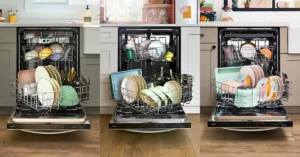3 Sustainable Multifamily Strategies
Green living was once known as a trend, but has now become a way of life. Sustainable apartment features are much more than an added bonus – they’re becoming “must haves” for renters.
According to the AMLI Residential 2018 Sustainable Living Index, 83 percent of apartment residents believe living in a green community is beneficial to their health and 59 percent would actually pay more to live in a green community. Renters, on average, are willing to pay more than $300 a year to live in a green building instead of a conventional one.
Developers have identified this need and are starting to incorporate more eco-friendly building materials into their projects. As of March 2018, more than 1.5 million multifamily residential units were participating in the U.S. Green Building Council’s LEED program, and that number is only expected to grow.
Here are a few strategies for increasing sustainability and driving resident retention:
Incorporate Water-Saving Amenities
With water rates steadily increasing and drought levels recently hitting their worst point in four years, water efficiency is more important than ever, and consumers are taking notice. In fact, about 93 percent of residents also want energy and water efficient features, which could range from low-flow shower heads and toilets to ENERGY STAR washers, which on average, use 13 gallons of water per load, compared to the standard 23 gallons.


Consider Location
Location can directly affect sustainability as well as interest from renters. Walkability to work, restaurants, shopping and public transportation is extremely important, and especially attractive to millennials and Generation Z. It doesn’t hurt that choosing walking and biking over driving can help minimize a tenant’s carbon footprint.

Integrate Biophilic Design
Biophilic design – a trend that is expected to gain traction in the residential market in years to come – blends wellness and sustainability by bringing nature into the built environment. Companies such as Google, Amazon and Facebook have already adopted biophilic design into their workspaces. There are a few ways to achieve this design trend, including:
- Use local, natural materials such as reclaimed wood or a stone like slate or quartz
- Incorporate daylight with bay windows and skylights
- Encourage a natural color palette in cabinetry and appliance finish


